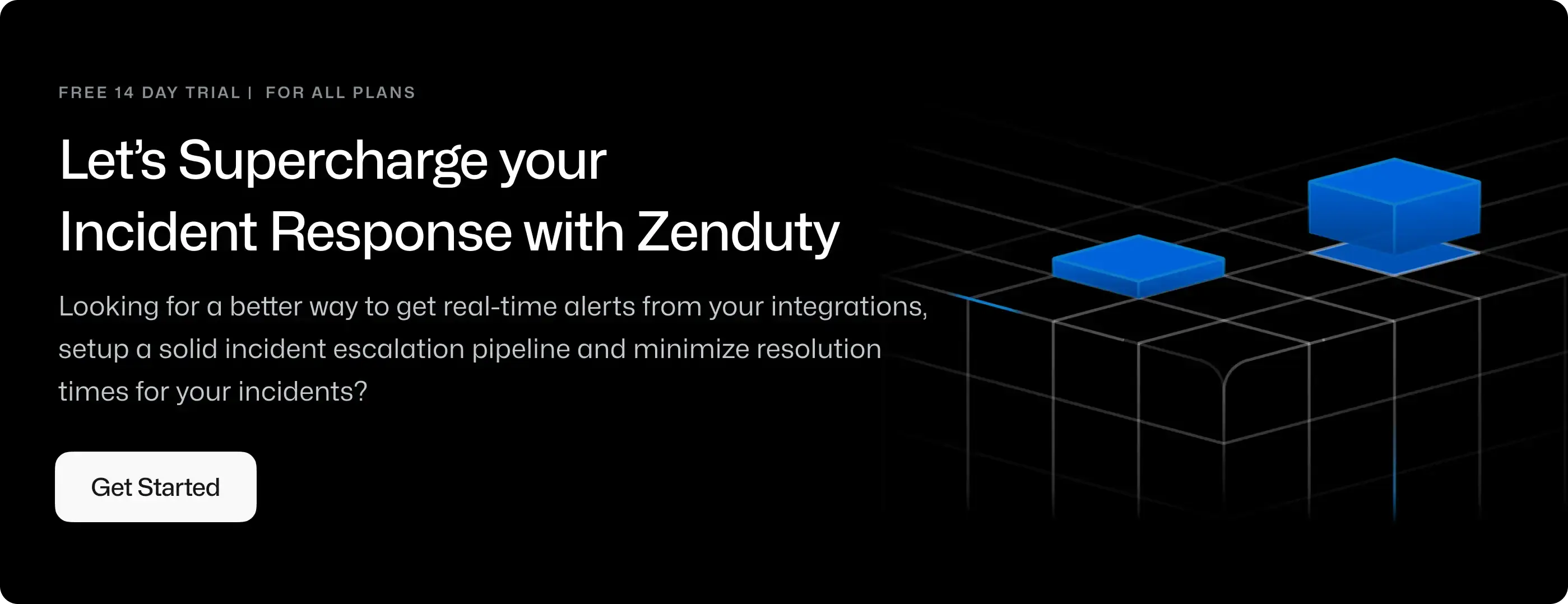Slack - Incident Command Integration Guide
The Incident Command integration for Slack lets you send real-time incident alerts to a Slack channel. To integrate Slack Webhook Outgoing with Zenduty, complete the following steps:
In Zenduty:
-
To add a new Incident Command integration for Slack, go to Teams on Zenduty and click on the team you want to add the integration to.
-
Next, go to Services and click on the relevant Service.
-
Go to Outgoing Integrations and then Add New Integration. Give it a name and select the application Slack Incident Command from the dropdown menu.
-
Go to Configure under your integrations and click on the Connect with Slack button. Authenticate your Slack account. You will be redirected back to your Zenduty integrations page.
-
To setup your incident command, you have two options - Single Channel or Multichannel.
-
In the single channel configuration, you can select from any of the existing channels and all incidents and updates will be sent that channel.[IMPORTANT] - In case you want the Zenduty bot to send alerts to a private channel, you need to first invite the Zenduty bot to the private channel. The private channel name will then appear in the dropdown list of channels. Please note that the list of channels(dropdown) will only contain the private channels where both the bot and the configuring user are channel members.
-
In the multichannel configuration, Zenduty will create a new channel for every incident that is created. Enter the Channel Name Prefix value. For example, if you choose the prefex as incident_, then an incident with number 123 will create a Slack channel named #incident_123. In the Archive channel when incident is resolved? section, you can say yes or no if you'd like to archive the channel after the incident is resolved. Whenever a new incident channel is created, all the on-call engineers, responders, roles and task addignees will be automatically added to the channel.
-
Click on Save to save the integration.
Connecting using the Global connector for Slack
You can also create a Global Connector for Slack, which your users can use to create Outgoing Slack integrations. The Global connector will provide the authentication for the Outgoing Slack integrations across the account. An account can have multiple Global Connectors for Slack.
-
Go to Account-> Connections and choose Slack and integrate Slack by authenticating

-
Once Slack is authenticated, you can use that connector to integrate Slack channels inside the service by selecting the extension.

Your Slack Incident Command integration is now setup!
Note: If the Zenduty app is removed(accidentally or otherwise) from your Slack tenant, you can re-authenticate your Global Slack Connector and all Outgoing integrations associated with the Global Slack Connector will be also be reactivated.
Slash commands
Zenduty exposed the following Slash commands on Slack:
/zenduty create- this command lets you create an incident. While executing this command you will be asked for the incidents details in a dialog./zenduty get <incident_number>- this command fetches the incident details for a given incident number./zenduty ack <incident_number>this command acknowledges an incident for a given incident number.
4./zenduty resolve <incident_number>this command resolves an incident for a given incident number.this command lets you see who is on call for any escalation policy within your teams.
How Zenduty uses your Slack Data
To learn more about how Zenduty uses your Slack data, alongnwith retention policies and mechanism to request to delete, please refer to our privacy policy here.
[Coming soon]: Slack Conversations for Incident Postmortems
Team members often discuss and collaborate on incident resolution within the channel. To enhance the incident postmortem process, Zenduty will soon allow postmortem authors to import relevant conversations from the Slack channel and attach them to the postmortem report. This feature will enable teams to maintain a comprehensive record of discussions, decisions, and actions taken during the incident, providing better context and facilitating more thorough post-incident analysis and review. It will ensure that all key insights are captured for future learnings and improvements.

